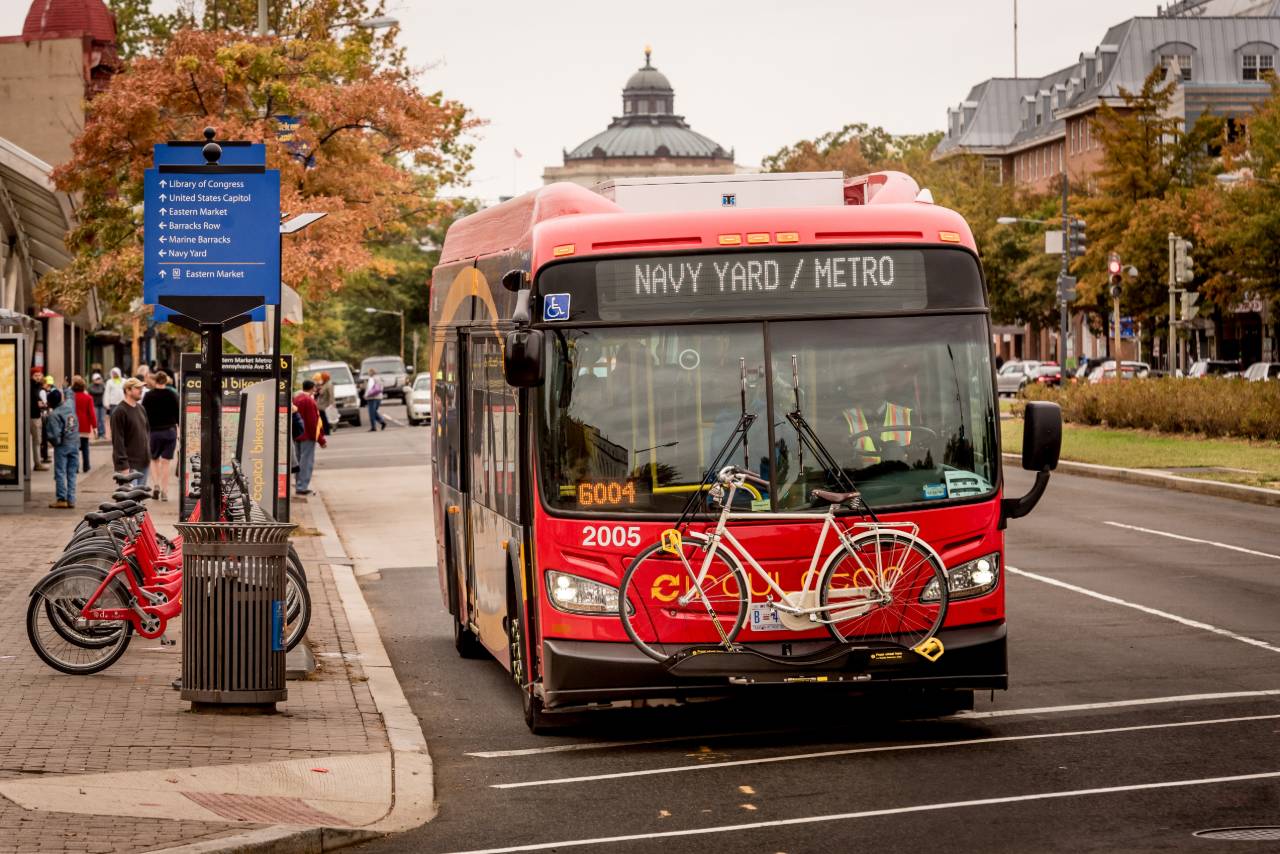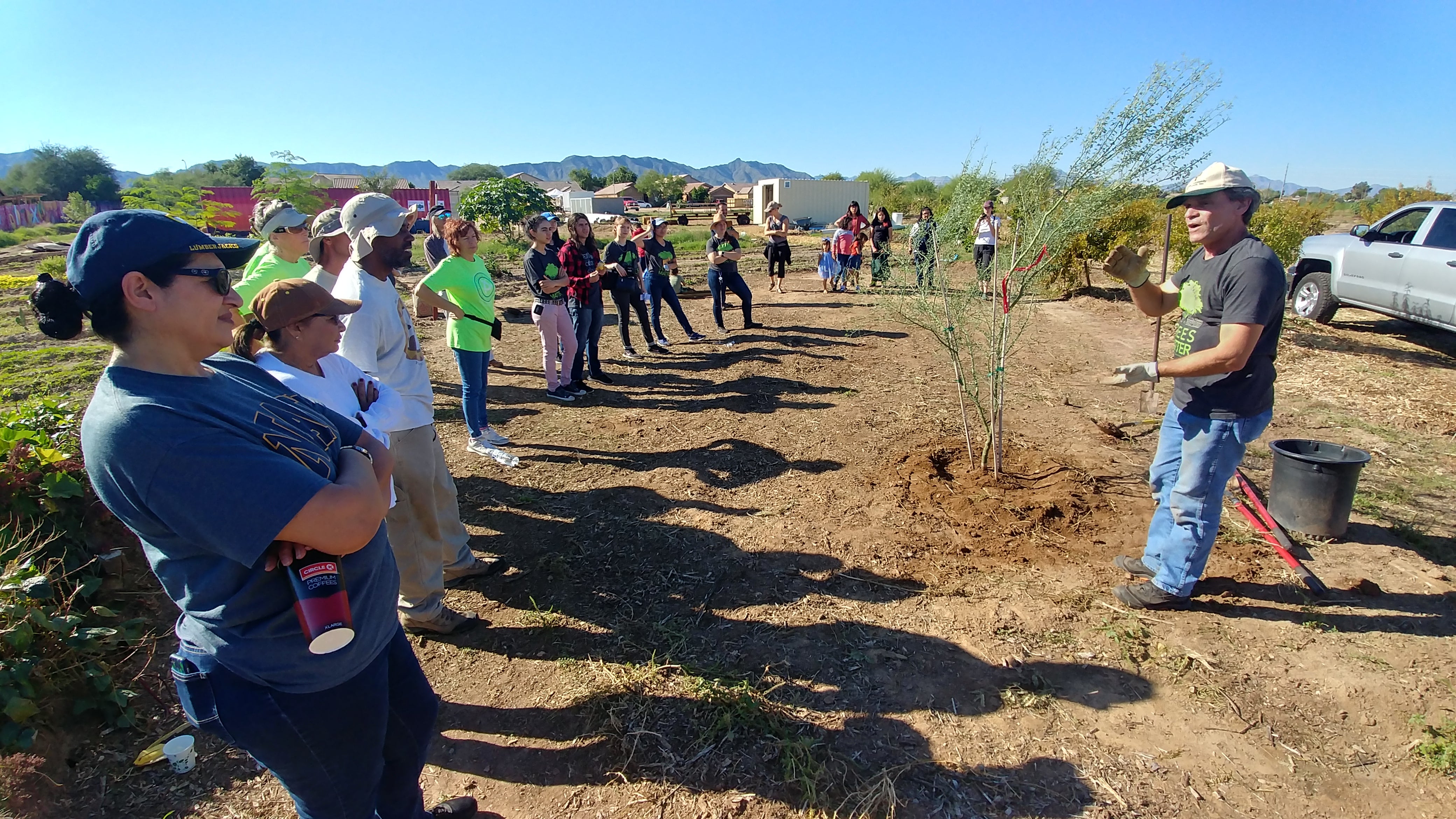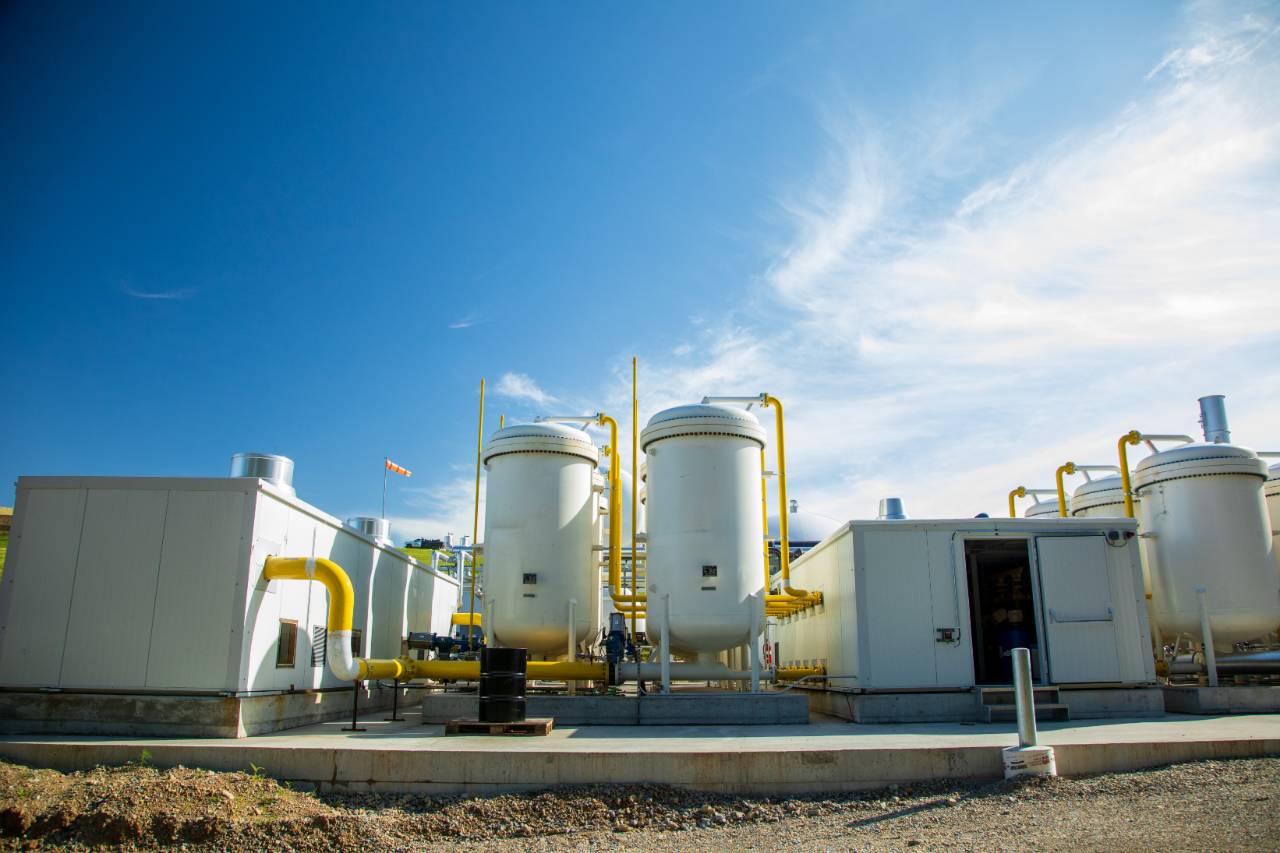Washington, D.C. has some of the worst traffic in the country, and its air quality pays a price.
D.C. officials decided to do something about it by boosting public transportation and investing in clean energy transportation alternatives to cut congestion and carbon emissions. After years of intensive planning, DC is now recognized as being one of the top cities for clean energy and transportation policies.
Transportation makes up 40% of the carbon pollution generated in the district. D.C. Mayor Muriel Bowser moved to tackle this problem when she signed the 2018 Clean Energy Omnibus Act, which requires all of the district’s energy to come from renewable sources by 2032, and promotes the electrification of public buses, taxis and certain privately-owned vehicle fleets. Half of these vehicles will need to be electric by 2030, increasing to 100% by 2050.
“If we are going to make progress on addressing climate change and global warming in our country, it’s going to be cities and states leading the way,” Bowser said when signing the bill. “We have created a model for jurisdictions across the nation to follow.”
The district has been planning for the impacts of climate change for over a decade, often linking it to a broader context of social equity, environmental responsibility, and economic opportunity. As part of its Sustainable DC 2.0 initiative, the district has a number of major climate-related programs underway to cut emissions and protect the city from future extreme weather- and health-based threats that scientists say are likely to impact the region. In addition to the clean energy initiative, which mandates increased renewable energy supplies, energy efficiency upgrades to buildings and investments in clean energy projects, in 2016 the district released a climate change adaptation plan, Climate Ready DC, which outlines specific actions to combat future climate threats.
“We are looking at ways to make public transport be the first choice in transit in our city.”
The city worked closely with U.S. Department of Transportation officials, scientists and community experts to identify growing hazards like the impacts of rising temperatures on roads and infrastructure, as well as increased flooding and high tides expected in future years. And it completed a Clean Energy DC plan in 2018 that identifies the greatest greenhouse gas emitters, as well as the most effective ways to reduce emissions. A big part of that, city officials say, is to promote public transportation and offer cleaner, less polluting transportation options for residents, such as electric buses, bike shares and electric scooters.
“The most important thing is to reduce the number of cars that commute into the city, no matter what the fuel source is,” says Tommy Wells, director of D.C.’s Department of Energy and Environment. “It’s much better to get people in public transportation…we are looking at ways to make public transport be the first choice in transit in our city.”
To do that, Wells says the city is focusing on massive upgrades to the Metro system, which is in the middle of a major rebuilding program after it lost ridership due to a deferred maintenance program. And the city is pouring funds into new clean energy transportation technology that will attract riders, such as electric buses. Using money from a multi-billion dollar settlement with Volkswagen for its U.S. EPA “dieselgate” scandal, the district is investing $5 million in an all-electric fleet of buses that travel several routes around the city. The city has also invested in other innovative transportation programs, such as spending $2.6 million to help Amtrak remove highly-polluting diesel-powered switcher locomotives that belch smoke and pollutants near poorer D.C. neighborhoods, substituting cleaner, electric train engines instead.
In spring 2019, the district released Resilient DC, a comprehensive strategy to make the city more resilient to change – including climate change, economic and population growth, and technological transformation. Improving transportation options is a key component of the plan, which notes that better systems will increase the region’s “ability to respond and recover from major disasters, while addressing everyday issues like traffic safety, economic inequality and lengthy commutes.”
While cutting carbon pollution and promoting public transportation can help reduce the impacts climate change, D.C. officials say it takes a regional effort to be more effective. The district has been working with state officials, transportation experts and nonprofit organizations throughout the Mid-Atlantic and the Northeast to come up with ways to cut emissions and make public transportation more accessible. By sharing information with other coalitions and communities, such as The Transportation and Climate Initiative, Our Transportation Future, and the Electrification Coalition, D.C. officials say they are able to learn about new ways to achieve clean energy goals.
D.C. officials say participating in climate coalitions and regional transportation meetings allows communities to make state-of-the art, science-based choices. “It’s a great way for cities to communicate with the science community and to add value to our efforts,” says Katherine Johnson, chief of D.C.’s Green Building and Climate Branch. “And it’s a two-way street. We get to talk to the experts and they learn from us about what our specific experiences are.”
Johnson says there’s a lot of local public support for programs that will cut pollution and make public transportation more accessible. Electric buses, for example, are a win-win for both the city and the residents who use them: maintenance costs are lower, the rides are smoother, and the noise and pollution are virtually non-existent.
And statistics back up the city’s efforts. Despite gaining roughly 100,000 people in the past decade, DC’s carbon emissions are heading in the right direction—down. Officials report that the district is on its way to meeting its goals of cutting carbon emissions in half by 2032, and to become carbon neutral by 2050. Much of that is due to improved building efficiency, clean energy sources and vehicle mileage improvements.
But despite these gains, D.C. officials know that the climate will continue to worsen and present more local challenges, including more intense rainfall events, flooding and bigger storms. By investing in more efficient and cleaner transportation systems, D.C. officials hope to minimize future impacts of climate change and provide residents with a cleaner and healthier lifestyle.
“We are in a crisis situation,” says Wells. “The problem in the past has been cities created huge amounts of pollution and waste and people moved away. Now people are moving back into the cities. They are growing again. People are willing to live here if we come up with the solutions.”
Story by: Rocky Kistner (Sept. 2019).
Image: DC Circulator at Eastern Market Metro | CREDIT: Sam Kittner.



